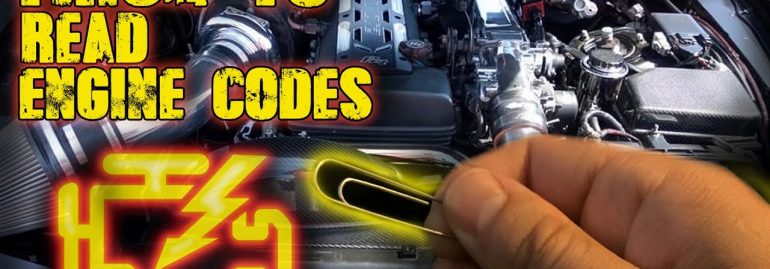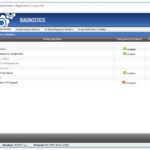Have you ever failed a car inspection just because of a small emissions issue? You’re not alone. In the European Union, strict emissions standards keep our air cleaner and our vehicles greener. But passing these tests isn’t always simple — especially if your car’s systems aren’t fully “ready.” That’s where OBD2 software comes in.
In this guide, we’ll walk you through everything you need to know about using OBD2 tools to prepare for EU emissions inspections. You’ll learn how to check your car’s health, fix problems early, and pass your test with confidence — all from your driveway. Sounds good, right?
Let’s dive in!
1. Introduction to EU Vehicle Emissions Standards
The European Union has long cared about clean air. To reduce pollution, the EU sets emission limits for all vehicles. These rules are updated every few years — think of them like software updates for the planet!
Each new standard (like Euro 4, Euro 5, Euro 6) sets stricter limits on harmful gases such as:
- Carbon monoxide (CO) – a poisonous gas from burning fuel.
- Nitrogen oxides (NOx) – causes smog and breathing problems.
- Particulate matter (PM) – tiny soot particles from diesel engines.
Cars made after 2001 in petrol and 2004 in diesel must have an OBD2 system to monitor these emissions. If the system detects a problem, your car may fail the inspection — even if it runs fine.
So how does the car know if it’s clean? That’s where OBD2 comes in.
2. What is OBD2 and Why It Matters for Emissions Testing
OBD2 stands for On-Board Diagnostics, version 2. It’s like your car’s built-in doctor. 🩺
Every modern car has an OBD2 port — usually under the steering wheel. Plug in a scanner, and it talks to your car’s brain (the ECU) to check how well everything is running.
During an EU emissions test, inspectors don’t just measure exhaust fumes. They also plug into the OBD2 port to check:
- If any warning lights are on.
- If all emission control systems are working.
- If the car’s readiness monitors have completed their checks.
If any of these fail, you fail — even if your tailpipe looks clean.
So, OBD2 isn’t just helpful — it’s essential.
3. Understanding Emissions Readiness Monitors
Here’s a secret many drivers don’t know: your car needs to “warm up” its self-checks before an inspection.
These self-checks are called readiness monitors. They run in the background while you drive, checking systems like:
- Catalytic converter
- Oxygen sensors
- Evaporative emissions (EVAP) system
- EGR (Exhaust Gas Recirculation)
After a battery change or fault code reset, these monitors reset to “not ready.” If too many are “not ready” at inspection time, you’ll fail — no matter how clean your engine runs.
Think of it like showing up to a job interview without your ID or resume. The inspector can’t trust the results.
So how do you make sure all monitors are “ready”? That’s where OBD2 software helps.
4. How EU Emissions Testing Differs from Other Regions
You might have heard about emissions tests in the US or other countries. But EU rules are a bit different.
| Feature | EU Emissions Test | US Emissions Test |
|---|---|---|
| Main Focus | OBD2 data + visual checks | OBD2 + tailpipe testing |
| Readiness Required? | Yes – all monitors must be ready | Varies by state |
| Driving Cycle | Simulated on dynamometer | Often real-world or simulated |
| Common Failure Cause | Not-ready monitors, DTCs | High CO or HC levels |
In the EU, the OBD2 check is key. If your car has even one active fault code or too many unreadiness flags, the test is over.
No second chances. No “it drives fine” excuses.
That’s why checking your car before inspection is so important.
5. Common Causes of Emission Test Failures
Let’s face it — nobody likes failing. But knowing the usual suspects helps you avoid them.
Common reasons cars fail EU emissions tests:
- Check Engine Light (CEL) is on – This alone can fail you.
- Faulty oxygen sensor – Makes the engine burn too much fuel.
- Bad catalytic converter – Can’t clean exhaust gases properly.
- Loose or damaged fuel cap – Lets fuel vapors escape (yes, really!).
- Incomplete readiness monitors – Often after a battery reset.
- Old or dirty air filter – Messes with air-fuel mix.
- Leaking EVAP system – Releases harmful fumes.
Many of these issues are easy (and cheap!) to fix — if you catch them early.
That’s where OBD2 software becomes your best friend.
6. Role of OBD2 Software in Pre-Test Diagnostics
Imagine walking into an exam without studying. Scary, right?
Using OBD2 software before your inspection is like doing a practice test. You can:
- See if any trouble codes are stored.
- Check if all readiness monitors are complete.
- Clear minor faults (if safe to do so).
- Confirm repairs actually worked.
Some apps even show live data — like oxygen sensor voltage or fuel trim — so you can spot trends before they become problems.
It’s like having a mechanic in your pocket.
7. Key Features to Look for in OBD2 Emissions Software
Not all OBD2 tools are the same. Here’s what to look for in one that helps with EU emissions readiness:
- Readiness Monitor Display – Shows which systems are “ready” or “not ready.”
- DTC Reading and Clearing – Finds and removes fault codes.
- Live Data Streaming – Lets you watch engine sensors in real time.
- Freeze Frame Data – Shows conditions when a fault occurred.
- EU-Compliant Protocols – Supports CAN, ISO, and other EU standards.
- User-Friendly App – Simple menus, clear language.
- Offline Mode – Works without internet.
Avoid cheap scanners that only show codes without explanations. You want to understand the problem — not just see a cryptic code like “P0420.”
8. Recommended OBD2 Software Tools for EU Readiness Tests 🛠️
Here are a few trusted tools used by DIYers and pros in Europe:
| Tool | Best For | Key Feature |
|---|---|---|
| OBDLink EX | Everyday drivers | Great app, clear readiness display |
| Torque Pro (Android) | Tech lovers | Custom dashboards, deep data |
| Bosch OBD125 | Quick checks | Plug-and-play, simple interface |
| Foxwell NT301 | No-phone users | Built-in screen, reliable |
| Carly for OBD2 | Premium experience | Brand-specific modes (VW, BMW, etc.) |
Any of these can help you pass — just make sure it supports readiness monitors, which not all cheap tools do.
9. Step-by-Step Guide to Using OBD2 Software Before an Inspection 🚦
Let’s walk through a real-life check-up.
Step 1: Plug in the OBD2 adapter
Find the port under your dash. Plug in the device. It should light up.
Step 2: Connect your phone or tablet
Open the app and pair via Bluetooth.
Step 3: Read fault codes (DTCs)
Tap “Scan.” If any codes appear, write them down.
Step 4: Check readiness monitors
Look for a “Readiness” or “Monitors” tab.
Green = ready.
Orange/Red = not ready.
Step 5: Clear codes (if safe)
Fixed a problem? Clear the codes. But don’t ignore recurring ones!
Step 6: Drive to complete monitors
Some monitors need a “drive cycle” — like city and highway driving.
Your app may guide you.
Step 7: Recheck before inspection
One last scan the day before your test. Peace of mind is priceless.
10. Interpreting Diagnostic Trouble Codes (DTCs) 🔍
Seeing a code like P0172 can feel scary. But most codes are simple.
Here’s a cheat sheet:
| Code | What It Means | What to Check |
|---|---|---|
| P0420 | Catalyst efficiency low | Catalytic converter, oxygen sensors |
| P0172 | System too rich (bank 1) | Fuel injectors, air filter, MAF sensor |
| P0442 | EVAP leak detected | Fuel cap, hoses, charcoal canister |
| P0135 | O2 sensor heater circuit | Oxygen sensor wiring or sensor itself |
| P0455 | Large EVAP leak | Fuel cap, filler neck, vacuum lines |
Many apps explain codes in plain English. Some even suggest fixes.
But remember: a code tells you what failed, not why. A pro may be needed for deeper issues.
11. Clearing Fault Codes: What You Need to Know ⚠️
You can clear codes with your OBD2 tool — but should you?
Yes, if:
- You fixed the problem.
- The check engine light came on due to a loose gas cap (common!).
- You want to confirm the repair worked.
No, if:
- The problem is still there.
- You’re just trying to “hide” a fault.
- The readiness monitors haven’t run yet.
Clearing codes resets the readiness monitors. That means you’ll need to drive again to complete them.
And if the same code comes back? Your car is trying to tell you something.
Listen to it.
12. Legal Considerations and Compliance in the EU 📜
Here’s the truth: you must not cheat on emissions tests.
Using OBD2 tools to diagnose and fix problems is 100% legal — and encouraged!
But using software to:
- Fake readiness monitors
- Block fault codes
- Disable emission controls
…is illegal and can lead to fines or penalties.
The EU cares about clean air. So do we. Let’s fix real problems, not fake results.
13. Advantages of DIY Emissions Testing with OBD2 Tools 🛠️
Why go DIY?
- Save money – Avoid garage fees for simple checks.
- Save time – Test anytime, no appointment needed.
- Learn your car – Know what each light means.
- Prevent failures – Catch issues before they grow.
- Feel empowered – No more guessing games.
I once failed because my fuel cap was loose. A €5 OBD2 scanner would’ve saved me a wasted trip.
Don’t be like me. Be ready.
14. When to Seek Professional Diagnostic Help 🚨
DIY is great — but some jobs need a pro.
Visit a garage if:
- You see repeating fault codes.
- The catalytic converter is failing (expensive fix).
- You’re not comfortable working on your car.
- The check engine light stays on after clearing.
- You need emission system repairs (like EGR or DPF).
A good mechanic can do advanced tests and repairs you can’t do at home.
There’s no shame in asking for help. Cars are complex!
15. Future Trends in OBD2 Technology and Emissions Compliance 🔮
The future is smart — and connected.
Soon, we might see:
- AI-powered diagnostics – Apps that predict failures before they happen.
- Remote inspections – Cars report emissions data automatically.
- Integration with smart cities – Your car talks to traffic systems.
- EV and hybrid OBD2 – Special tools for electric emissions (like battery health).
And as Euro 7 standards come (expected 2025–2026), OBD2 systems will get even smarter.
Staying ahead means staying ready.
16. Conclusion: Stay Ready, Stay Legal with Smart Diagnostics ✅
Failing an emissions test isn’t just a headache — it can cost time, money, and stress.
But it doesn’t have to happen.
With a simple OBD2 scanner and software, you can:
- Check your car’s health anytime.
- Fix small issues before they become big ones.
- Make sure all readiness monitors are complete.
- Walk into your inspection with confidence.
Think of it like brushing your teeth — small habits prevent big problems.
So ask yourself: Is your car ready?
Plug in, scan, and find out.
Because in the EU, being green isn’t just good for the planet — it’s the law. 🌱
And with the right tools, passing your emissions test can be as easy as a Sunday drive.
Happy scanning! 🚗💨






